Distribution Business
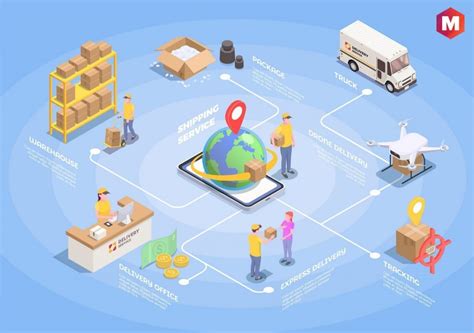
Welcome to the world of distribution businesses, an essential component of the supply chain that facilitates the movement of goods from manufacturers to retailers and, ultimately, to consumers. These enterprises are the unsung heroes of commerce, often operating behind the scenes to ensure the seamless flow of products. This article aims to delve deep into the intricacies of distribution businesses, exploring their functions, benefits, and the impact they have on the global economy.
Understanding Distribution Businesses
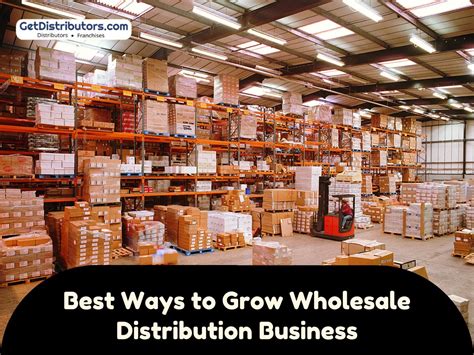
At its core, a distribution business is a commercial entity that serves as a vital link between producers and end-users. These businesses specialize in managing the logistics of transporting, storing, and delivering goods, often in large quantities. They act as a bridge, connecting manufacturers who produce goods with retailers who sell them, and ultimately with the consumers who use or consume the products.
Distribution businesses play a crucial role in managing inventory levels, optimizing transportation routes, and ensuring the timely delivery of products. They are responsible for ensuring that the right products are available at the right place and at the right time, a complex task that involves precise planning and execution.
The scope of distribution businesses is vast, covering a wide range of industries and product categories. From food and beverages to electronics and automotive parts, these businesses are involved in the distribution of a myriad of goods. Their services are indispensable to the smooth functioning of the global supply chain, and their efficiency directly impacts the availability and affordability of products for consumers.
The Evolution of Distribution Businesses
The concept of distribution businesses has evolved significantly over time. In the early days of commerce, manufacturers often sold their goods directly to consumers, a process that was time-consuming and often inefficient. As markets expanded and transportation networks developed, the need for intermediaries became apparent. This led to the emergence of distribution businesses, which initially focused on local and regional markets.
With the advent of globalization and the expansion of international trade, distribution businesses grew in scale and complexity. They began to operate across borders, managing the logistics of transporting goods over long distances. This evolution required them to adapt to new challenges, such as navigating international regulations, managing complex transportation networks, and dealing with varying cultural and business practices.
Today, distribution businesses are highly sophisticated entities, leveraging advanced technologies and logistics strategies to optimize their operations. They employ a range of tools, from warehouse management systems to predictive analytics, to enhance their efficiency and responsiveness. As the global economy continues to evolve, distribution businesses are poised to play an even more critical role in ensuring the smooth flow of goods and services.
The Functions and Benefits of Distribution Businesses
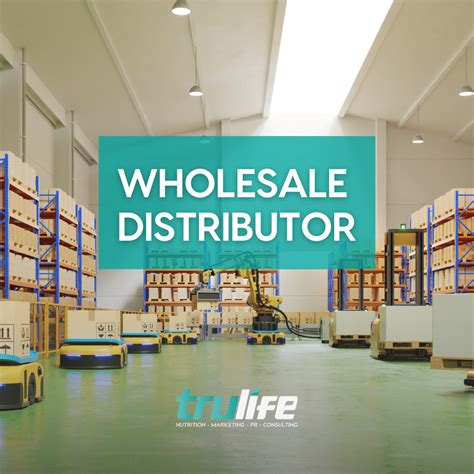
Distribution businesses offer a wide range of functions and benefits that contribute to the efficiency and effectiveness of the supply chain. Here are some of the key roles they play:
1. Inventory Management
One of the primary functions of distribution businesses is to manage inventory levels. They work closely with manufacturers to forecast demand, optimize production levels, and ensure that the right products are available when needed. This involves sophisticated inventory management systems that track stock levels, anticipate demand fluctuations, and facilitate timely reordering.
By managing inventory effectively, distribution businesses help prevent stockouts, reduce excess inventory, and optimize cash flow for manufacturers and retailers. They ensure that products are available in the right quantities, at the right time, and at the right location, thereby enhancing the overall efficiency of the supply chain.
| Inventory Management Metrics | Description |
|---|---|
| Stock Turnover Rate | Measures how often inventory is sold and replaced. A higher rate indicates efficient inventory management. |
| Days of Inventory | Represents the average number of days that inventory is held before it is sold. |
| Inventory Accuracy | Measures the accuracy of inventory records compared to physical stock counts. |
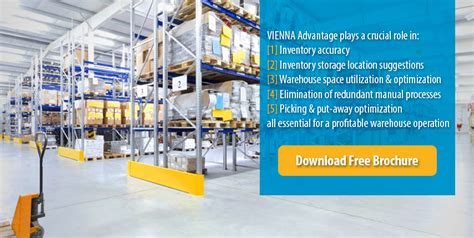
2. Transportation and Logistics
Distribution businesses are experts in transportation and logistics. They coordinate the movement of goods from manufacturers to warehouses, and then to retailers or end-users. This involves optimizing transportation routes, selecting the most cost-effective and efficient modes of transportation, and managing the entire delivery process.
They utilize a range of transportation methods, including road, rail, air, and sea, to ensure timely and cost-effective delivery. Advanced logistics technologies, such as GPS tracking and real-time shipment monitoring, are employed to enhance visibility and ensure that deliveries are made on schedule.
| Transportation Metrics | Description |
|---|---|
| On-Time Delivery Rate | Measures the percentage of deliveries that arrive at their destination within the agreed timeframe. |
| Transportation Cost per Unit | Calculates the cost of transporting each unit of goods, helping to identify cost-effective transportation methods. |
| Average Transit Time | Represents the average time taken for goods to be transported from the manufacturer to the end-user. |
3. Warehousing and Storage
Distribution businesses operate large warehouses or distribution centers where goods are stored, sorted, and prepared for delivery. These facilities are strategically located to minimize transportation distances and optimize delivery times. Advanced warehousing technologies, such as automated storage and retrieval systems, are often employed to enhance efficiency and accuracy.
Warehousing allows distribution businesses to consolidate shipments, optimize loading and unloading processes, and manage inventory more effectively. It also provides a buffer against fluctuations in demand, ensuring that products are readily available when needed.
| Warehousing Metrics | Description |
|---|---|
| Warehouse Space Utilization | Measures the percentage of available warehouse space that is occupied by inventory. |
| Average Order Processing Time | Represents the time taken to process and ship an order from the warehouse. |
| Order Accuracy Rate | Measures the percentage of orders that are shipped accurately without errors. |
4. Market Coverage and Accessibility
Distribution businesses play a crucial role in expanding market coverage and improving accessibility for both manufacturers and retailers. By establishing a network of distribution centers and partnerships with local distributors, they can reach a wider geographical area and serve a larger customer base.
This expanded market coverage allows manufacturers to sell their products to a broader range of retailers and consumers, increasing their sales and market share. For retailers, it means a wider selection of products and more competitive pricing, which can drive sales and customer satisfaction.
5. Risk Mitigation
Distribution businesses act as a buffer against various risks associated with the supply chain. They help manage inventory risks by holding sufficient stock to meet demand fluctuations. They also mitigate transportation risks by diversifying transportation methods and routes, ensuring that delays or disruptions in one mode of transport do not impact the entire supply chain.
Furthermore, distribution businesses can provide insurance and financial services to protect against risks such as theft, damage, or loss of goods during transportation or storage. This risk mitigation capability is invaluable to manufacturers and retailers, providing them with peace of mind and ensuring business continuity.
The Impact of Distribution Businesses on the Economy
The role of distribution businesses extends beyond the supply chain, having a significant impact on the broader economy. Here are some of the key ways in which distribution businesses contribute to economic growth and development:
1. Job Creation and Economic Activity
Distribution businesses are significant employers, creating jobs across various sectors of the economy. From warehouse workers and logistics specialists to transportation personnel and customer service representatives, distribution businesses employ a diverse range of skilled professionals. These jobs contribute to economic activity and help reduce unemployment rates.
Furthermore, distribution businesses often have a multiplier effect on the economy. Their operations create demand for a wide range of goods and services, including transportation, packaging, warehousing equipment, and IT services. This stimulates economic activity in other sectors, creating a positive ripple effect throughout the economy.
2. Enhancing Efficiency and Productivity
The efficient operations of distribution businesses directly contribute to increased efficiency and productivity in the supply chain. By optimizing inventory management, transportation routes, and warehousing processes, they help reduce costs and improve overall supply chain performance.
This increased efficiency translates into cost savings for manufacturers and retailers, which can be passed on to consumers in the form of lower prices. It also allows businesses to operate with greater agility and responsiveness, adapting quickly to changing market conditions and consumer demands.
3. Facilitating International Trade
Distribution businesses play a critical role in facilitating international trade. They are experts in navigating the complexities of cross-border trade, including customs regulations, import/export procedures, and international logistics. By streamlining these processes, they make it easier for manufacturers and retailers to engage in global trade, expanding their markets and increasing their competitiveness.
International trade has a significant impact on the global economy, promoting economic growth, job creation, and cultural exchange. Distribution businesses are at the forefront of this global exchange, enabling businesses to reach new markets, source products from diverse suppliers, and offer a wider range of products to consumers.
4. Promoting Innovation and Technological Advancements
Distribution businesses are at the forefront of innovation in the supply chain. They invest heavily in technologies and processes that enhance efficiency, accuracy, and responsiveness. This includes the adoption of advanced logistics technologies, such as automation, robotics, and AI-powered analytics, which drive innovation and productivity gains.
Furthermore, distribution businesses often collaborate with technology providers and logistics experts to develop new solutions that address specific supply chain challenges. This collaborative approach fosters innovation and helps drive technological advancements in the industry, benefiting not only distribution businesses but also manufacturers, retailers, and consumers.
The Future of Distribution Businesses
The future of distribution businesses is poised for significant growth and transformation. As the global economy continues to evolve, driven by technological advancements, changing consumer preferences, and emerging markets, distribution businesses will need to adapt and innovate to stay ahead of the curve.
Here are some key trends and developments that are shaping the future of distribution businesses:
1. E-commerce and Omnichannel Distribution
The rise of e-commerce and omnichannel retailing is transforming the role of distribution businesses. With consumers increasingly shopping online and expecting seamless shopping experiences across multiple channels, distribution businesses are adapting to meet these demands.
This involves developing strategies to support e-commerce fulfillment, including last-mile delivery, order consolidation, and returns management. Distribution businesses are also investing in technologies that enable real-time inventory visibility, personalized recommendations, and dynamic pricing, to enhance the online shopping experience.
2. Sustainability and Environmental Impact
Sustainability is becoming an increasingly important consideration for distribution businesses. With growing concerns about the environmental impact of logistics and transportation, these businesses are under pressure to adopt more sustainable practices.
This includes optimizing transportation routes to reduce fuel consumption and emissions, adopting electric or hybrid vehicles, and investing in energy-efficient warehouse operations. Distribution businesses are also exploring innovative solutions, such as drone delivery and autonomous vehicles, to further reduce their environmental footprint.
3. Data-Driven Decision Making
The increasing availability of data and advanced analytics is transforming the way distribution businesses operate. By leveraging data-driven insights, they can make more informed decisions about inventory management, transportation routes, and customer preferences.
Distribution businesses are investing in advanced analytics tools and data science capabilities to extract valuable insights from vast amounts of data. This enables them to optimize their operations, improve forecasting accuracy, and deliver a more personalized and efficient service to their customers.
4. Collaboration and Partnerships
Collaboration and partnerships are becoming increasingly important for distribution businesses. By partnering with manufacturers, retailers, and technology providers, they can develop innovative solutions and share resources to enhance their capabilities.
This collaborative approach allows distribution businesses to access new markets, leverage specialized expertise, and improve their overall efficiency. It also enables them to offer a more comprehensive range of services to their customers, providing end-to-end supply chain solutions.
5. Technology and Automation
Technology and automation will continue to play a critical role in the future of distribution businesses. Advanced technologies, such as robotics, AI, and the Internet of Things (IoT), are transforming logistics operations, enhancing efficiency, and reducing costs.
Distribution businesses are investing in automated warehouse systems, robotic process automation, and AI-powered analytics to optimize their operations. These technologies enable them to handle larger volumes of goods, improve accuracy and speed, and provide real-time visibility into their supply chain.
Conclusion
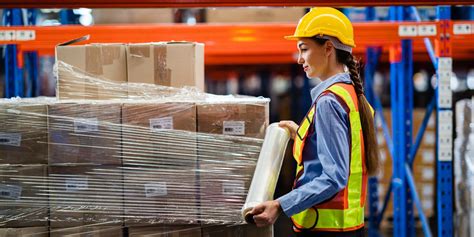
Distribution businesses are a vital component of the global economy, playing a critical role in the smooth functioning of the supply chain. Their functions, which include inventory management, transportation, warehousing, and market coverage, have a profound impact on the efficiency and effectiveness of commerce.
As the world continues to evolve, distribution businesses will need to adapt and innovate to stay relevant. By embracing emerging trends, such as e-commerce, sustainability, data-driven decision making, and technology-driven automation, they can continue to thrive and contribute to the growth and development of the global economy.
What are the key challenges faced by distribution businesses today?
+Distribution businesses face a range of challenges, including managing complex supply chains, dealing with fluctuating demand, and adapting to rapidly changing consumer preferences. Additionally, they must navigate regulatory and compliance issues, especially when operating across borders. Finally, the increasing focus on sustainability and environmental impact poses a significant challenge for distribution businesses to adopt more eco-friendly practices.
How do distribution businesses contribute to the circular economy?
+Distribution businesses play a crucial role in the circular economy by facilitating the reuse, recycling, and refurbishment of products. They help extend the lifecycle of products by managing reverse logistics, handling product returns, and ensuring that used products are properly recycled or refurbished. This reduces waste and promotes sustainability in the supply chain.
What are some emerging technologies that will shape the future of distribution businesses?
+Several emerging technologies will significantly impact the future of distribution businesses. These include blockchain for supply chain transparency and traceability, advanced robotics for automated warehousing and distribution, AI and machine learning for predictive analytics and demand forecasting, and drone technology for last-mile delivery and inventory management.



